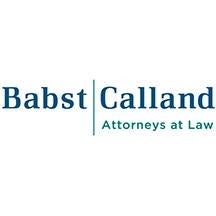The Inflation Reduction Act of 2022 (IRA) created a number of tax incentives in the form of credits and deductions to encourage development of alternative clean energy generation capacity. On August 28, 2023, the U.S. Department of the Treasury published a Notice of Proposed Rulemaking (NPR) detailing the conditions for receipt of the tax incentives and the potential penalties for non-compliance with those conditions by “taxpayers” – the developers and operators of qualifying clean energy projects. Increased Credit or Deduction Amounts for Satisfying Certain Prevailing Wage and Registered Apprentice Requirements, 88 Fed.Reg. 60018 (August 28, 2023). Uniquely, many of these incentives and potential penalties are premised on apprenticeship and prevailing wage requirements imposed by the Federal Davis-Bacon Act, 40 U.S.C. §3141, et seq. and its Related Acts (DBA). Compliance with prevailing wage and registered apprenticeship standards is now required for projects seeking the full value of various clean energy tax credits. Failure to comply with the rules will result in developers missing out on the full value of the credit and potentially the imposition of $5,000 multiplied by the total number of laborers and mechanics who were paid below the prevailing wage rate.
Until now the Davis-Bacon and Related Acts (Prevailing Wage Acts or PWA) have been applicable only to contractors actually employing “mechanics or laborers” on federally-funded projects “for construction, alteration, or repair” of “public buildings and public works” 40 U.S.C. §3142(a). The NPR, however, pushes compliance upstream to developers and producers seeking the tax advantages created by the IRA, who in all likelihood do not employ anyone covered by the Prevailing Wage Acts. This Alert provides an overview of how the NPR incorporates these labor laws into the clean energy tax incentives. It also highlights some of the anticipated difficulties developers and producers may encounter when attempting to take advantage of the tax benefits.
Clean Energy Tax Incentives and Penalties
The general intent of the NPR is revealed in Section III of its Preamble: “Generally, if a taxpayer satisfies the PWA requirements … the amount of credit or deduction determined is equal to the otherwise determined amount of the underlying credit or deduction multiplied by five.” 88 Fed. Reg. at 60019. With the multiplier, projects that satisfy the labor requirements can get a bonus rate of 30% for the investment tax credit or 1.5 cents per kilowatt hour for the production tax credit.
Developers and producers who intend to benefit from the incentives need to be cognizant of the penalties for non-compliance. Non-compliance can only be remedied if “the taxpayer makes a correction payment to the laborer or mechanic and pays a penalty to the Secretary of the Treasury ….” Id. The amount of the correction payment is the difference between wages paid and the prevailing wage, plus interest at 6% for the applicable period. Id. The penalty amount payable to the Secretary is ‘‘$5,000 multiplied by the total number of laborers and mechanics who were paid wages at a rate below the [prevailing wage] rate … for any period’’ during the year.” Id. “Intentional disregard” of the PWA requirements subjects violators to correction payments of three times the difference in wages and a $10,000 penalty for each violation. Id. at 60020.
Apprenticeship Requirements
In addition to the PWA requirements the IRA imposes an apprentice labor hours requirement mandating that developers and producers use qualified apprentices on their projects. Id. at 60020. The NPR mandates employment of “one or more qualified apprentices” by “each taxpayer, contractor, or subcontractor who employs four or more individuals to perform construction, alteration or repair work with respect to the construction of a qualified facility ….” Id. The labor hours required to be worked by apprentices vary depending on when construction of the qualified facility commences: 10% for projects which began before 1/1/2023; 12.5% for projects begun after 12/31/22; and 15% for projects beginning after 12/31/23. Id. Exceptions to the Apprenticeship Requirements are available for demonstrated good faith effort that the taxpayer was unable to procure the necessary number of apprentices from a registered apprentice program, or if the taxpayer makes a penalty payment to the Secretary in the amount of $50 per laborer for each hour that should have been worked by apprentices. Id. A taxpayer determined to have intentionally disregarded the Apprenticeship Requirements faces a $500 per labor hour penalty.
Pre-Hire Project Labor Agreement (PLA) Provisions
Project Labor Agreements are authorized under Section 8(f) of the National Labor Relations Act, 29 U.S.C. §158(f). These are labor contracts applicable to a defined project. Although the IRA and NPR do not require the use of PLAs, as a policy matter they are encouraged on qualified projects: “Pre-hire project labor agreements may be used to incentivize stronger labor standards and worker protections in the types of construction projects for which taxpayers may seek increased credit, and having a project labor agreement in place may also help ensure compliance with PWA requirements. For these reasons, the proposed regulations would also provide that the penalty payment requirement would not apply with respect to a laborer or mechanic employed under a project labor agreement that meets certain requirements and any correction payment owed to the laborer or mechanic is paid on or before a return is filed claiming an increased credit amount.” Id. at 60029.
Anticipated Compliance Difficulties
Because the regulations proposed in the NPR are not yet final and will not become final until sometime next year there is no immediate need to comply. Nevertheless, it is also essential for developers and producers to anticipate the compliance issues that are evident from the NPR, and perhaps even to submit comments to the U.S. Department of the Treasury addressing those issues.
Most developers and producers do not employ “mechanics and laborers” and have no experience administering the Prevailing Wage and Apprenticeship Requirement – compliance with these requirements has heretofore always been the responsibility of the construction contractors. How will taxpayers demonstrate compliance with the PWA and Apprenticeship Requirements? The construction contracts between the taxpayer and its contractors at a minimum should require: (a) warranties that the contractor has complied with all PWA and Apprenticeship Requirements; (b) the contractor to provide to the taxpayer any documentation necessary to establish such compliance; and (c) should contain appropriate indemnification provisions if non-compliance by the contractor results in loss of deductions or credits and imposition of penalties on the taxpayer.
Taxpayers also need to consider the apparent advantages of adopting a Project Labor Agreement for qualified projects and weigh them against the often vehement opposition to such agreements by many competent merit shop contractors and their industry trade groups, such as the Associated Builders and Contractors. Although a developer or producer, as owner of the project, can require the use of a PLA such a requirement could limit the number of otherwise qualified contractors who will bid on a project.
Conclusion
This Alert only summarizes some of the more salient labor-related issues raised by the NPR. The final rule may restrict or expand upon these proposed requirements to take advantage of the tax incentives. Regardless, developers and producers intending to construct qualifying projects need to begin preparing for these compliance issues and others raised by the NPR.





 i
i


